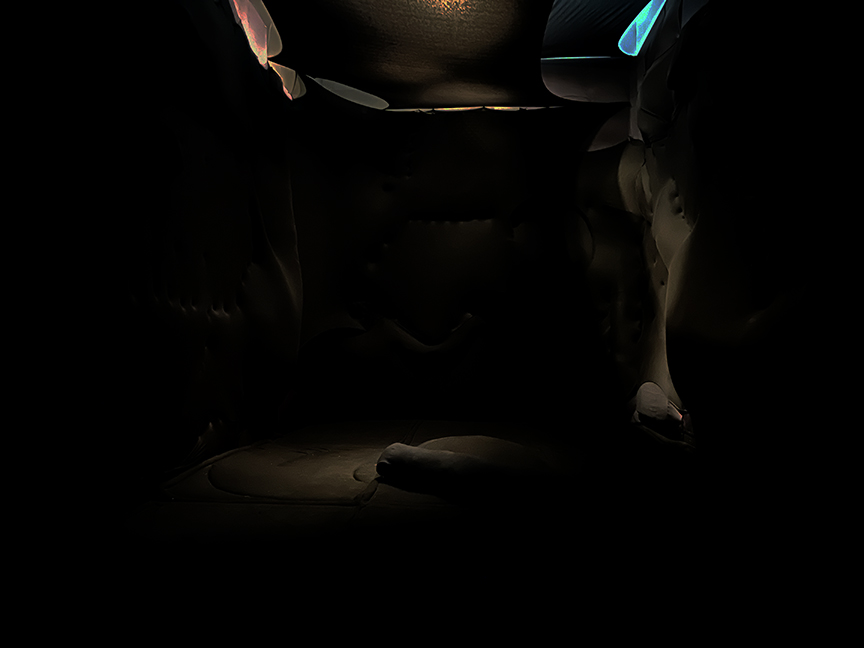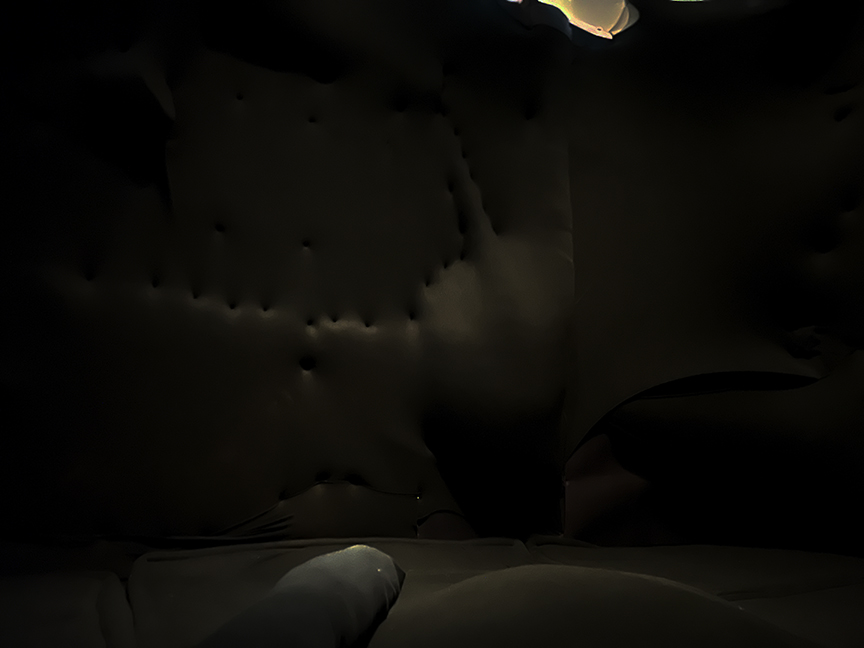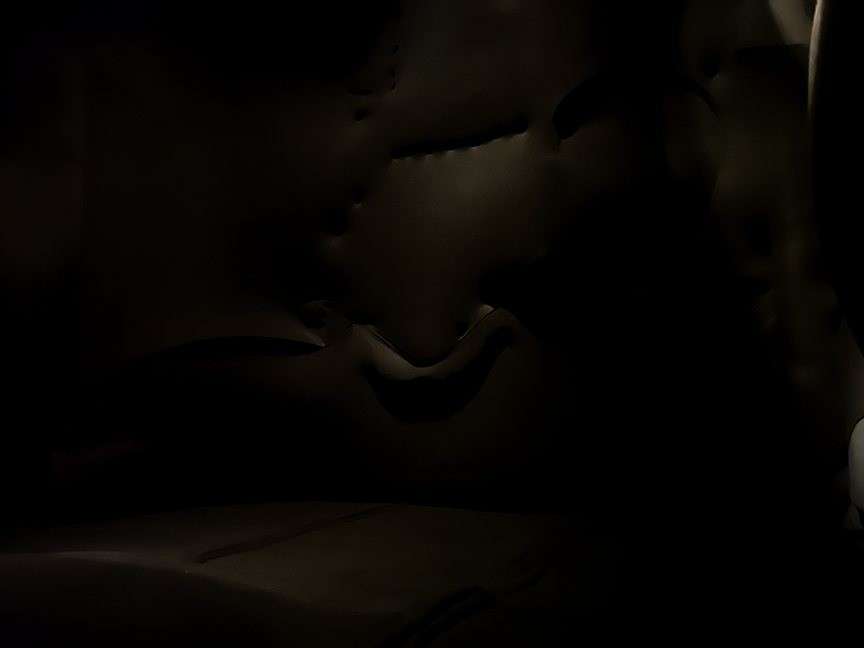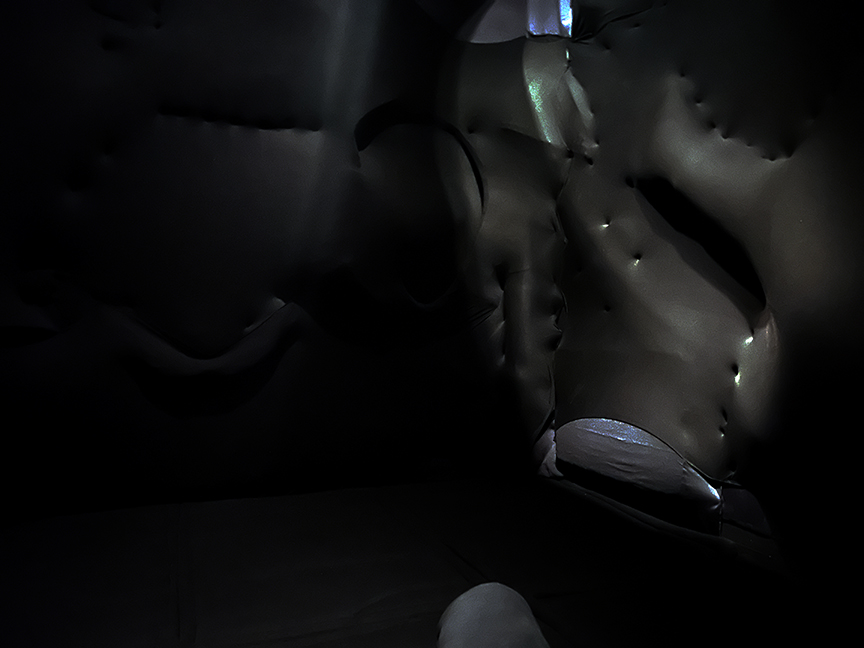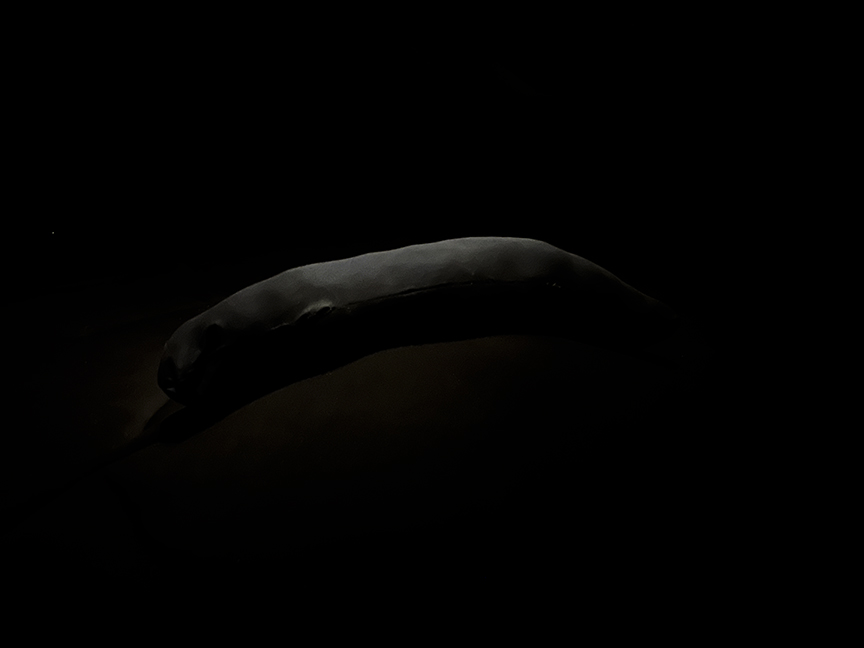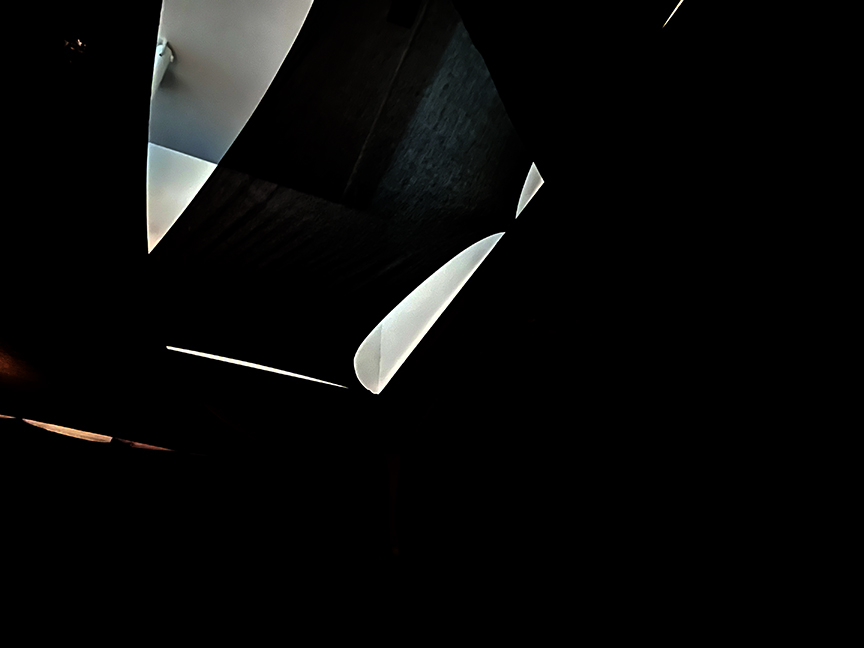I can see you, can you hear me? – Jonathan Ma
Statement
I can see you, can you hear me?
Rayon, foam, batting, thread, green tea, jasmine tea, matcha powder, cinnamon, cloves, cardamom, five spice, Szechuan pepper, Szechuan peppercorn, anise, rosemary, sage, lavender
What happens when an artwork is designed to consider all senses as carefully as a painter considers the visual?
This work is titled after one of the first cross-sensory phrases I paid attention to. It’s an experience we should all be familiar with, one I heard during my weekly family Zooms when I logged in to face a black screen, “I can see you, can you hear me?” We are constantly surrounded by a rich multi-sensory tapestry; but our art, technology, and lives are often blind to the non-visual world. Art is not just something for the eyes, hung up on the wall and carefully considered. Art can be found in the spice cabinet, the cool earth on your warm toes, in quiet conversations and loud meditations where, as George Eliot wrote, “we should die of that roar which lies on the other side of silence.”
Touch the work as it touches you. Let your hands feel the grooves the way your eyes might follow a painting’s leading lines through the forms and textures. Hug the bulging walls and discover a peculiar smell that is unnamably nostalgic. What does abstract art smell like, is it a scent that lives on the tip of your tongue?
See the piece come into focus as you hear it. Shout! Sing! Don’t strain to capture the echo as it deadens into the floor. Let what comes to your senses come and relinquish the rest. You aren’t stepping into a black screen, an open cavity, a cave, a womb. You are dancing (Dance!) on something beyond single-sense epiphanies.
Bio
Jonathan Ma is an installation artist, neuroscientist, and translator. He calls his work “multimodal” rather than multimedia – borrowing the neuroscientific word for the integration of multiple senses. As a first generation Chinese-American, Ma makes art as translations, giving form to the formless experiences of one world to enrich another: arts and sciences, east and west, sensation and perception. This approach enables him to delve deeply into our relationships with selfhood, identity, language, gender, and perception.
As he began looking for commonalities across these disparate realms, Jonathan targeted narrowly-defined Western norms in both the arts and sciences. Seeking to make new and safer spaces for himself and his communities, Jonathan is as likely to be inspired by a museum as by a poem, a walk with a friend, or quiet meditation. By building upon new ideas diffusely, Jonathan embraces a studio practice revolving around an ethos of constant learning and experimentation.

